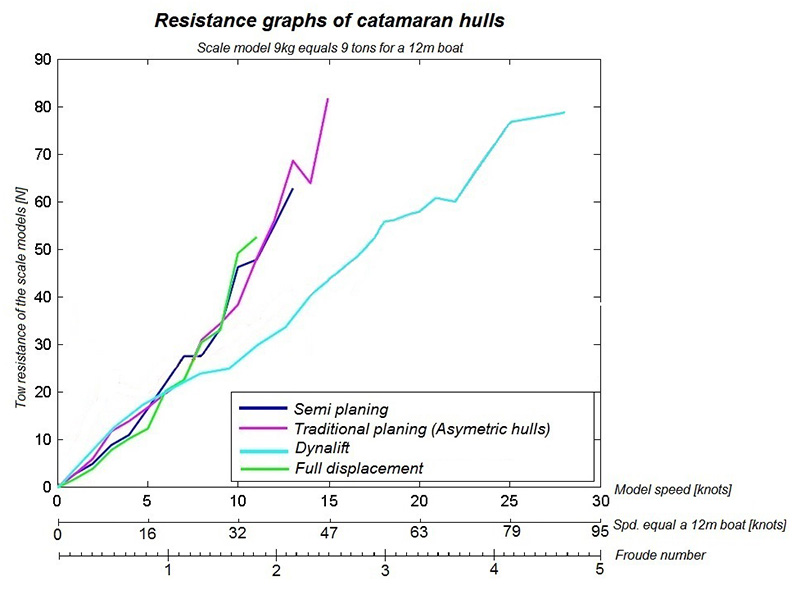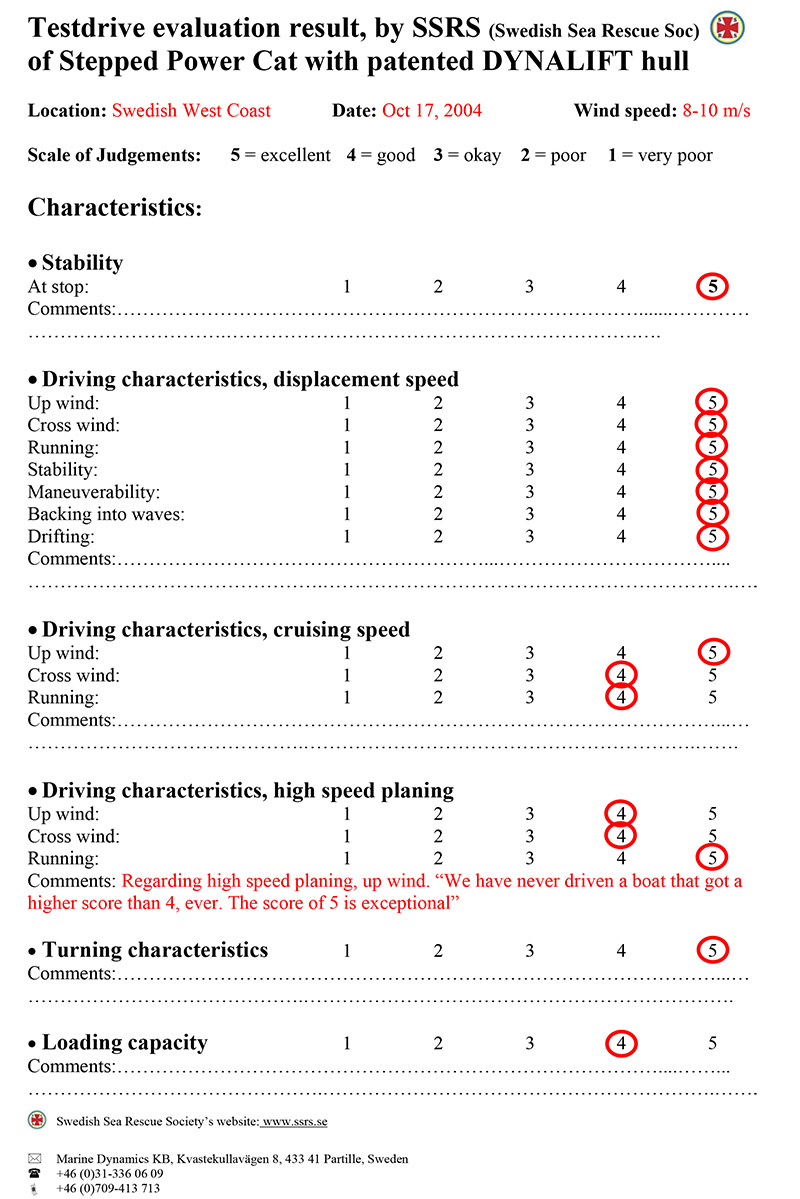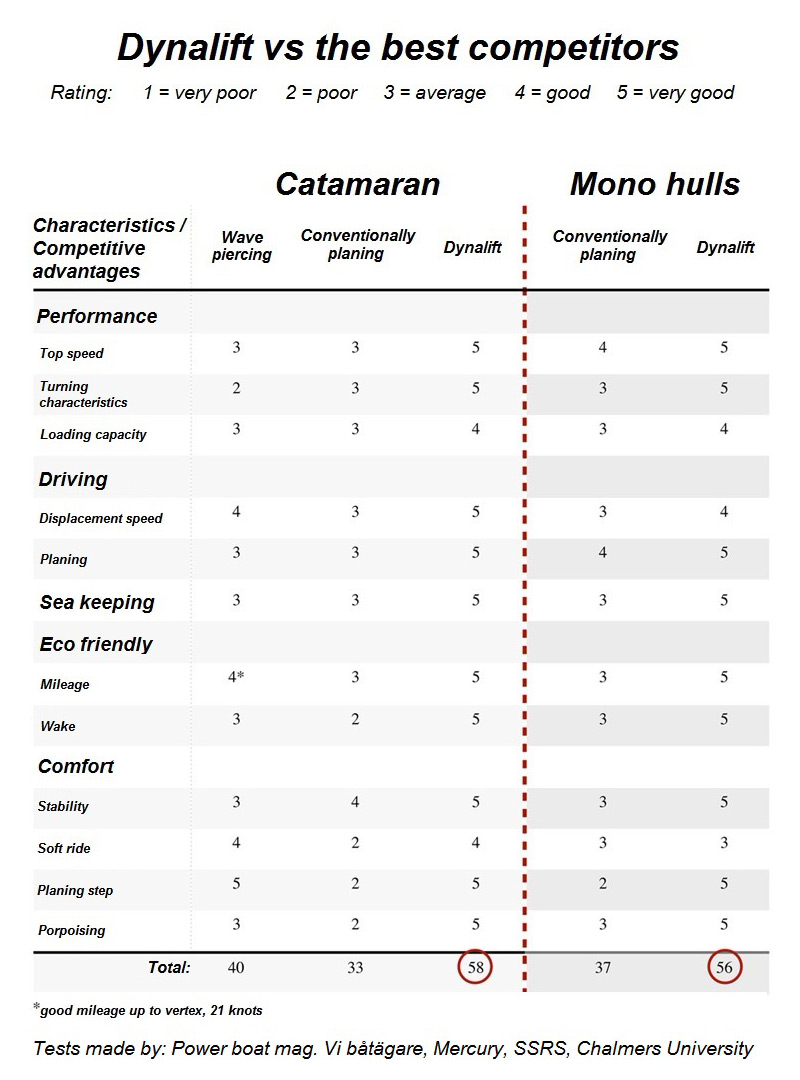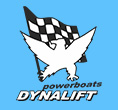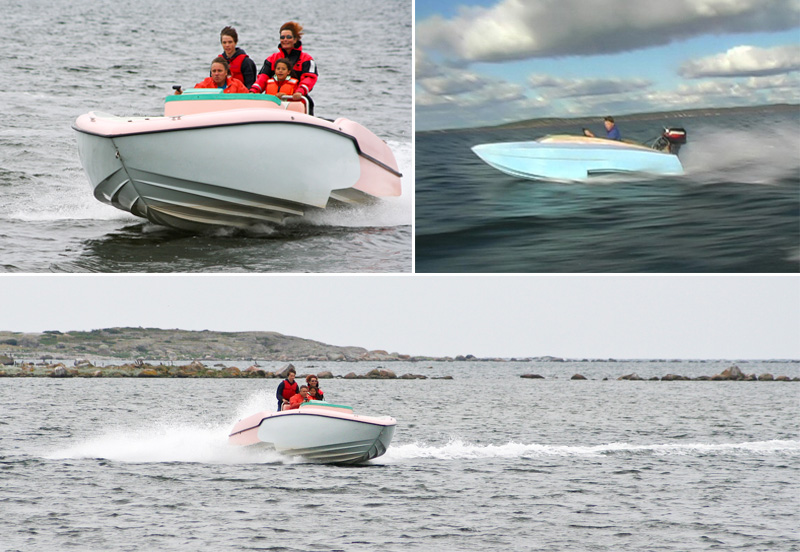
Function
Hydroplaning is when you have separated riding surfaces that resembles the wings of an aircraft. You get distinct a planing surface where a large part of the boat sits in the air and is not wetted at all. On the Dynalift mono hulls there are two (2) planing areas and on the power-catamarans four (4).
A Dynalift hull builds a higher planing pressure compared to a traditional V- hull. This means the boat is planing earlier, has a higher loading capacity and is more easily propelled. The high planing pressure additionally makes the wake insignificant. There is less impact on the environment by reducing beach erosion. The risk of accidents caused by backwash is also lowered.
The Dynalift hull has separate planing areas that are short and wide. With a reduced wetted area you get lower friction resistance. The induced drag is decreased as well. The wetted surface reduces the faster the boat goes, therefore generating less drag. This makes the boat very easily propelled, reducing fuel consumption and providing about double range with the same amount of fuel.
The hull always retains the same position in the water since the pressure is simultaneously built in the bow and stern. Consequently the planing step disappears (clear sight/safety) and you can run the entire speed range from 1 knot up to high-speed planing. The hull can plane at lower speeds compared to a traditional hull of the same size. The hull is also porpoising-free, generating a directionally stable ride.
The Dynalift hull is dive-free when going downwind in rough weather conditions. The planing area in the bow provide more planing pressure (lift) in the bow. The boats can therefore make sharp U-turns at higher speeds compared to traditional boats.
The Dynalift catamaran hull is a so called a "tunnel boat" with straight freeboards in the tunnel. This means that there will be no wake inside the tunnel. All spray and water is thrown outwards. This provides lower resistance and a uniquely smooth ride when going upwind. The tunnel is placed high above the water surface. This means that in the water does not hit the ceiling of the tunnel.
The straight inner freeboard makes the drift minimal when the boat is at stop. In turns the boat steers like a car.
Research and development
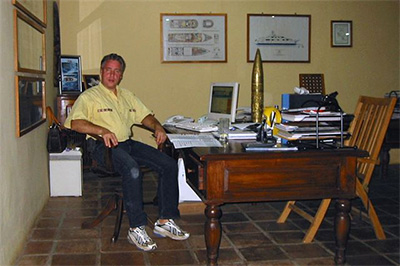
Sten Örneblad, naval architect
The cutting-edge Dynalift design is the result of many years of ongoing research, modelling, and hydrodynamic testing and is scientifically developed by Sten Örneblad, boat designer and innovator. Sten's specialities are aero and hydrodynamics.
Independent tests show that the Dynalift hull makes up to 25% less drag than a traditional "straight deep V-hull" and makes 17 % less drag than a so called "ventilated" hull.
Development methodology
- In our development methodology we use scale models
- This provides low cost and allows more thorough research
- In order to make comparative tests between the models, we use a method with a lever. This enables you to see which model is making the least drag
- In order to generate data for the calculations and graphs we use dynamometers
- The models are towed alongside a boat with a tow bar in order to be observed and filmed
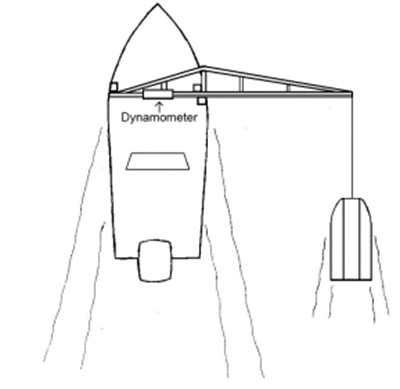
To develop the Dynalift C-38, we made models in scale 1:3, since they can be run with outboards and crew. GoCat is an example of this. A prototype of the C-38 in 1:1 scale was built in Indonesia, and full-scale experiments were carried out on site including the SSRS (Swedish Sea Rescue Society) and the Bali Coast Guard.

1:3 Scale model for the Dynalift C-38 development
We have a test area in the ocean north of Varberg, Sweden. This provides several advantages compared to a test basin.
Sten occasionally works as mentor at Chalmers faculty of ship-hydrodynamics. Our own research of stepped-hulls has been confirmed by graduates work at Chalmers, where the Dynalift hull has been the reference object.
U.S. patent and design protection in the EU
The research yielded such unique results regarding sea-keeping and performance, it was granted a U.S. patent. This can only be obtained if one can show improvements in relation to what is already known. Furthermore, one must be able to demonstrate that one are the originator. Sten Örneblad is the man behind the patent and founder of Dynalift Powerboats corp. There is also a design pattern granted for the Dynalift hull in Europe.
We have no competitors regarding the hull concept.
Tests
The same laws of Nature apply regardless of size. Note that a 6 meter boat is in 1:3 scale in relation to a 18 meter boat.
A Dynalift mono V-hull compared to a traditional V-hull
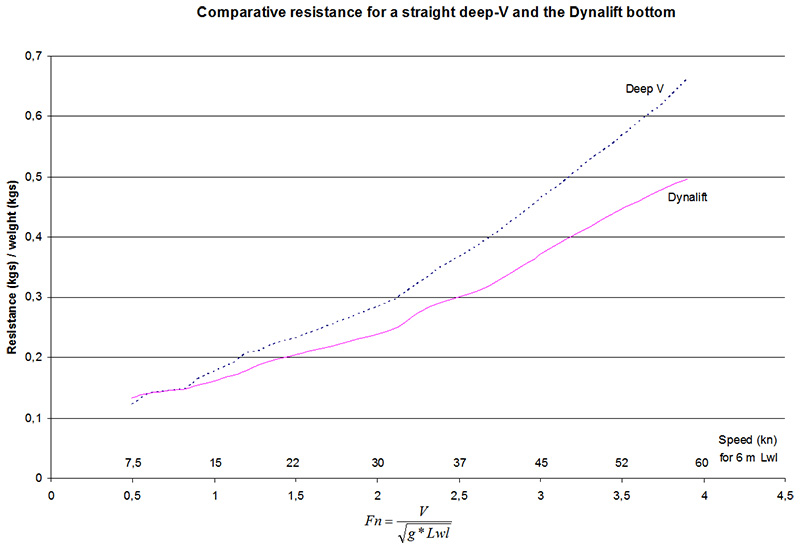
Comparisons between the Dynalift hull and various hull types concerning speed and hp
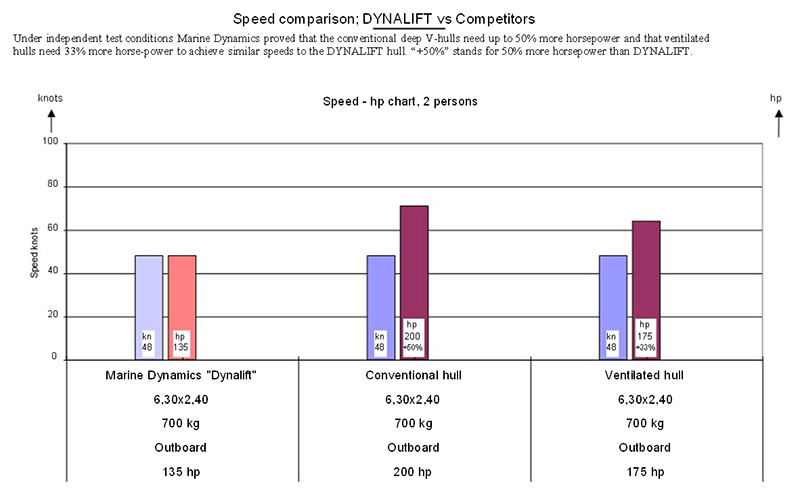
Motorboat & Yachting
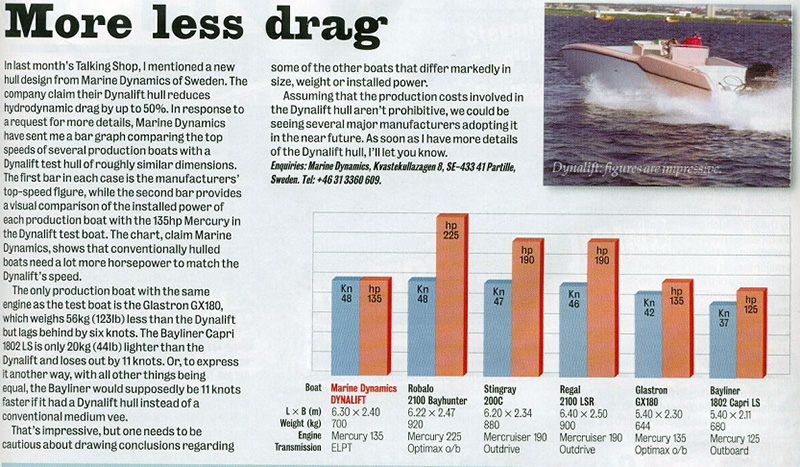
The Department of Shipping and Marine Technology Chalmers University of Technology
Gothenburg, Sweden, 2008
"A modern stepped-hull is the Dynalift, developed by Sten Örneblad". "The Dynalift makes up to 33% less drag running through the water compared to a traditional V-hull. With Örneblad's stepped-hull there is also excellent manoeuvring and sea-keeping qualities obtained. The Dynalift and a conventional V-hull will be the reference hulls in the evaluation of this project". Quote from the report: Innovative design of high-speed pleasure boats. Graduate work of shipping and marine technology.
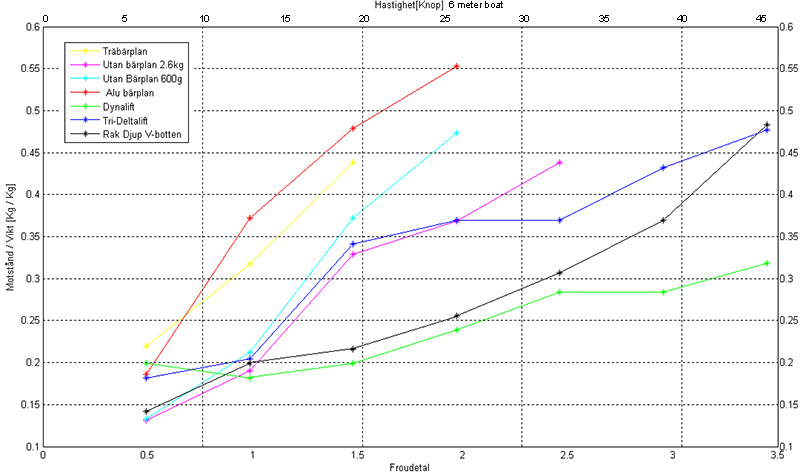
The Department of Shipping and Marine Technology
Chalmers University of Technology
Gothenburg, Sweden, 2013
Bachelor Thesis in cooperation with Sten Örneblad, Dynalift powerboats AB
